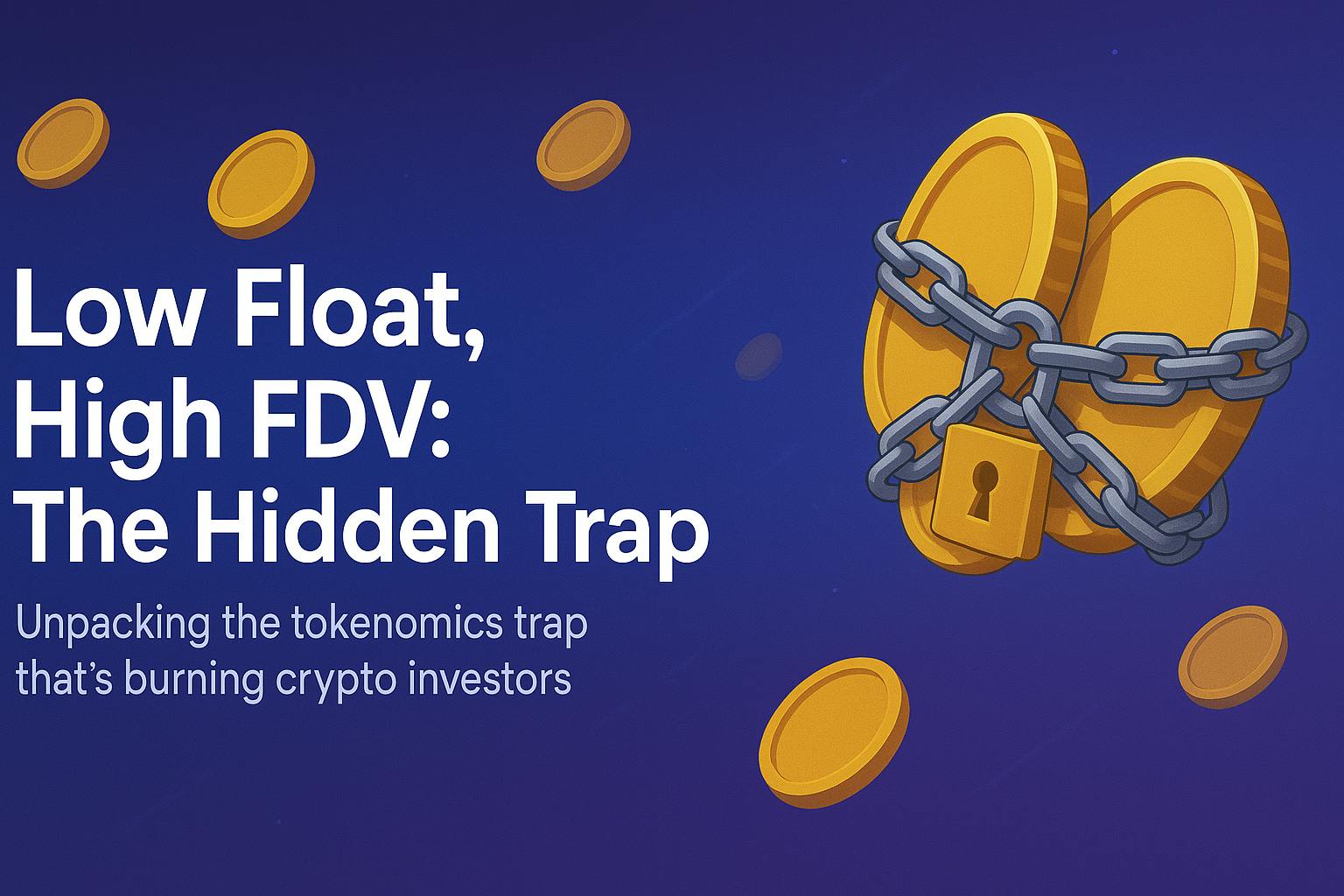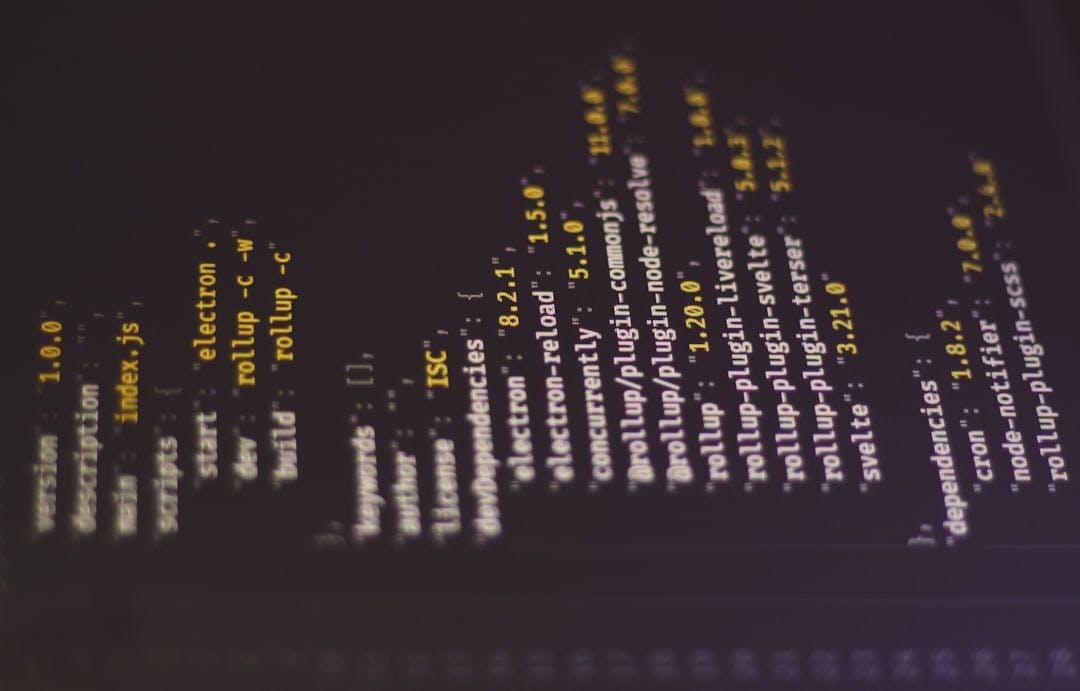If you’ve been in crypto for a while, you’ve likely heard the buzz about “low float, high FDV” tokens. It’s a hot topic on X, with analysts and even exchanges like Binance weighing in. But what does it mean, and why should you care? Spoiler: this tokenomics setup can be a trap for investors, and I’m here to break it down.
In May 2024, crypto analyst VaderResearch posted on X, arguing that float is a “meme” that can be gamed, and the low float, high FDV model isn’t the villain it’s made out to be. I’ve been digging into tokenomics for years, and while I agree with some of his points, there’s more to the story. Let’s unpack the issue and arm you with the knowledge to navigate this tricky space.
What Are Low Float and High FDV Tokens?
- Float (Circulating Supply): The number of tokens available for trading. If a project has 1 billion tokens total but only 10 million are circulating, the float is 10 million—or 1%. A low float means few tokens are out there.
- FDV (Fully Diluted Valuation): The market cap if all tokens were circulating at the current price. So, if those 10 million tokens trade at $10 each, the circulating market cap is $100 million, but the FDV is $10 billion. A high FDV makes the project look “expensive” on paper.
This model became popular during the 2023–2024 bullish market, as projects used low float to create scarcity and drive up prices. But it comes with big risks.
By the way, want to uncover the psychology behind the most successful crypto projects? Follow me on X! As a marketing pro, I dive deep into the industry’s manipulations and share insights you won’t find anywhere else.
Why Low Float, High FDV Tokens Are a Problem
Here’s why this structure often burns investors:
-
Artificial Scarcity Inflates Prices (Until It Crashes)
A low float creates scarcity, so even small buying pressure can spike the price—think 10x after a token generation event (TGE). But that price is shaky. As more tokens unlock (via vesting for teams or investors), supply surges, and the price often tanks. TokenInsight noted in 2024 that “unlocking tokens over time can create significant selling pressure.”
-
High FDV Limits Growth
A high FDV means the project is valued at billions on paper, leaving little upside for retail investors. Unchained reported in 2024 that “low float, high FDV tokens often leave little upside for traders after the TGE.” If the FDV is $10 billion but the circulating market cap is $100 million, the price needs to 100x to match the FDV—a tough ask for most projects.
-
Volatility Turns Trading Into a Rollercoaster
Low float tokens are volatile. A $50,000 trade on a 1% float token can swing the price 20% either way, making it a playground for whales while retail traders get burned.
4. Price Discovery Happens in a “Rigged” Market
Hasib Qureshi told Unchained in 2024 that “price discovery in low float, high FDV coins happens in a private market that’s either rigged, delusional, or both.” VCs buy in cheap during private rounds, inflating valuations, then dump on retail investors at launch.
5. Float Can Be Gamed
VaderResearch argued that float is misleading. Platforms like CoinGecko count unlocked tokens as “float,” but those tokens might sit idle. He compared two tokens: $TokenA (4% float at TGE) and $TokenB (60% float). On paper, $TokenB looks better, but if treasury tokens don’t circulate, the actual float could be the same.
6. It Erodes Trust in Crypto
This model has left many retail investors burned, fueling the “crypto is a scam” narrative. When prices crash post-hype, it undermines trust in the market—something we can’t afford.
Why Do Projects Use This Model?
- Hype and Fundraising: Low float drives up prices at launch, attracting investors and attention.
- High Valuations: A high FDV makes the project look valuable, helping with VC pitches and exchange listings.
- Early Investor Profits: VCs and teams buy in cheap, then sell high during the TGE, often at retail’s expense.
This approach peaked in 2023–2024, but the cracks are showing as the market matures.
Real-World Examples of Low Float, High FDV Disasters
These examples are based on real cases and projects, but as I’m a professional player inside this industry, I will not call the names so as not to cause any conflicts of interest. But what I will show you is very common.
Example 1: The 2024 Meme Coin Hype
In 2024, a meme coin (let’s call it $MEME) launched with a 10% float and a $10 billion FDV. The price spiked from $0.10 to $0.50 in days, but crashed to $0.02 after token unlocks, leaving late investors with a 96% loss.
Example 2: A 2024 DeFi Protocol
A 2024 DeFi protocol with a 2% float and $5 billion FDV surged 15x in a week, but with no real product, it dropped 80% after a token unlock, sparking “rug pull” accusations.
How to Spot and Avoid the Low Float, High FDV Trap
Here’s how to protect yourself:
- Check the Float-to-FDV Ratio: If the FDV is 50x the circulating market cap, be cautious. Look for projects where it’s closer to 5x or 10x.
- Dig Into the Vesting Schedule: Check when tokens unlock. Gradual releases over years are safer than big early unlocks.
- Look at the Free Float: Free float (excluding insider tokens) gives a better sense of liquidity. Use platforms like Messari for this data.
- Assess Fundamentals: A high FDV is fine if the project has real value—a working product, adoption, or growth potential. If it’s just hype, steer clear.
- Watch for Red Flags in Private Valuations: A $1 billion private valuation with no product is a warning sign.
- Be Wary of Hype: If a low float token is all over X with “to the moon” vibes, take a step back.
What’s Being Done About It?
The industry is waking up to this issue:
- Binance’s Pivot: In 2024, Binance shifted to listing smaller projects, moving away from low float, high FDV tokens.
- Better Metrics: Analysts like Coin Metrics are pushing for free float metrics to improve transparency.
- Community Pushback: Voices like VaderResearch are forcing projects to rethink tokenomics.
The Future of Tokenomics: A Call for Balance
The low float, high FDV model won’t disappear soon—it’s too profitable for early investors. But as the market matures, I expect more balanced tokenomics, with transparency and real utility taking center stage.
For now, education is your best defense. Understand the risks, do your research, and don’t fall for the hype. The next time you see a token with a 1% float and a $10 billion FDV, ask: Is this a real opportunity, or a pump-and-dump waiting to happen?
What do you think about low float, high FDV tokens? Drop your thoughts in the comments—I’d love to hear your take!
Want more crypto deep dives? Follow me on X for real-time thoughts or message me directly. Let’s keep the conversation going.



















